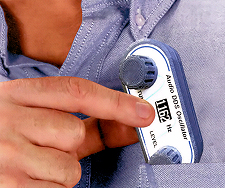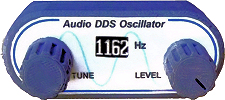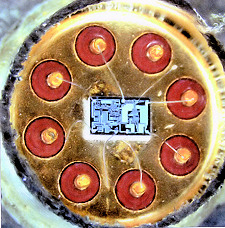September 2021
This month’s highlights
USB SuperCodec (Part 1)
This marvel is the ultimate in high-fidelity stereo audio recording and playback. It has very low distortion and noise and you can use it for digitising vinyl records or recording your own music. It connects to a computer via USB and offers Windows, MacOS and Android driver support. The 192kHz 24-bit circuit can also turn your PC into an advanced audio analyser, capable of measuring THD down to 0.0001% and SNR up to 110dB or more. The basic operation of the circuit and parts list are described this month, with circuit diagrams following in next month’s issue.
Shirt-pocket Crystal-locked Audio DDS Oscillator
Using fewer than 20 inexpensive parts, this compact self-contained little audio oscillator can fit in your shirt pocket yet it delivers a super-accurate sinewave when and where you need it. It is based on an ATtiny85 microcontroller, a 64×32 OLED display, a rotary encoder and an output filter/ level control. Discrete components, simple to build.
High-power Ultrasonic Cleaner (Part 1)
This large ultrasonic cleaner is ideal for cleaning bulky items like mechanical parts or delicate fabrics. It has an adjustable power level, and timer from 20 seconds to 90 minutes, with additional protection built in including soft start and over-current protection. The circuitry is based on a PIC16F1459 microcontroller driving high power MOSFETs. Circuitry is described this month and practical construction details will be included in Part 2 next month.
Night Keeper Lighthouse
 A nice and simple little project ideal for beginners. The lighthouse-shaped (but not sized!) board lights up briefly in the darkness to provide a reassuring signal. The circuit is easy to build with a couple of transistors and an LED. A great introduction to electronics that could be built by a 10-year old, as extra component identification hints and tips are included. Powered by a single 1.5V cell.
A nice and simple little project ideal for beginners. The lighthouse-shaped (but not sized!) board lights up briefly in the darkness to provide a reassuring signal. The circuit is easy to build with a couple of transistors and an LED. A great introduction to electronics that could be built by a 10-year old, as extra component identification hints and tips are included. Powered by a single 1.5V cell.
Audio Out: A question of balance (Part 1)
Our audio expert runs through practical hints and tips for building a top quality low-noise balanced lead, starting this month with a comprehensive rundown on XLR connectors and their methodology. Everything you need to know about low-noise XLR leads will be found in this very comprehensive article.
Max’s Cool Beans (Part 19)
Max continues to develop a Victorian-style multisegment digital display the likes of which you’ve never seen before!
Special Feature
Flowcode Graphical Programming
The first in an occasional series offering an easy route to programming microcontrollers and avoiding the steep learning curve of writing C code.
A 30 day free demo download of Flowcode is available at https://flowcode.co.uk/download
After 30 days the demo continues to operate with restricted features. Check the article for a 20% discount voucher code.
PIC n’ MIX (Part 7)
PIC18F Development Board
This month our PIC microcontroller expert expands on the voltage monitoring capability that we developed previously by logging the data to a file hosted on a MicroSD card. In this issue the related software is discussed.
Practically Speaking
Ever wondered what makes components ‘tick’? Our hands-on workshop technician brings us a myriad of fascinating ‘exploded views’ of parts (literally sometimes!) that he has taken apart, and gives tips on how to spot fake components commonly sold in the usual online emporia. Discover the innermost workings of a wide range of components through a series of super photographs.
Circuit Surgery
Our expert describes in depth multistage log amplifiers for RF power measurement.
Also in this issue:
- The Fox Report – Devolo’s duff instructions drive our writer to distraction
- Techno Talk – On the impending arrival and major implications of BT’s digital takeover of old analogue phone circuits
- Net Work – the arrival of Windows 11 and why a TPM is needed on your PC
In next month’s issue:
Mini Wi-Fi LCD Backpack; Ultrasonic Cleaner Part 2; USB SuperCodec (Part 2); Cricket IoT with Node-RED & Raspberry Pi.

September 2021 files for download - 0921-DL.zip
DOWNLOADPrinted Circuit Boards
We supply PCBs for all our projects going back to 2013.
New PE service – Programmed PICs
Buy programmed PICs for most of our projects.













